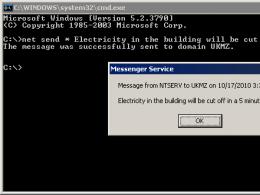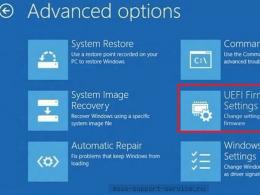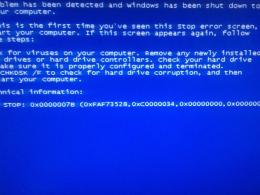Win 10 minimum requirements. Using specialized utilities
And others are already ready to register. But you need to understand what Windows 10 system requirements must be met in order for everything to work well.
Iron
For everything to more or less function, you need not so much hardware. This:
- Processor with a clock frequency of at least 1 GHz;
- The amount of RAM is from 1 GB for 32-bit operating systems, and from 2 GB for 64-bit operating systems;
- Free hard disk space from 16 GB for 32-bit operating systems and from 20 GB for 64-bit operating systems;
- A video adapter is required with DirectX 9 onwards and must have a WDDM 1.0 driver;
- The display resolution is suitable from 800x600.
Thus, a rather weak computer is obtained, on which the requirements for Windows installation 10 will be satisfied. This does not mean that magic will happen, and old pieces of iron will begin to demonstrate the wonders of their capabilities. Most likely, with such parameters, you will have to unscrew all the graphic effects of the desktop into a minus.
Upgrading from a previous version
So, Microsoft is launching a new feature, and it allows . To do this, you must have Windows 7 Service Pack 1 or Windows 8.1 on your computer. Where will the old operating system go after installing the new one? Correct answer: it will remain on the computer for one month. Then Windows 10 will remove this version. That is, users have the opportunity to roll back within one month.
If there is not enough hard disk space
Well, let's suppose that the computer is not allowed to install a new operating system with a small amount of memory. There is a spare course for this - connect USB stick. Windows 10 itself will report that there is not enough hard disk space and additional memory is required, which can be used USB stick. You should be aware that there is critically little space for a new operating system - this is 32 GB.

For normal operation of any operating system, free space is required. It's all about the files that applications create for the duration of their work or forever. If the free space is exhausted, then Windows starts to slow down. Can be deleted old version operating system after installing a new one. Of course, rollback after that will become impossible, but there will be free space.
Network connection
No matter how trite it may sound, but you need to have an Internet connection. Yes, for those who connect via a 3G modem, you need to know that the downloadable setup file weighs 3 Gigabytes, and money can be withdrawn for this traffic.
Software Compatibility
The most interesting question: will my favorite applications remain on the computer after reinstallation? Yes and no. The new operating system from Microsoft carefully checks not only hardware compatibility, but also tests programs. So if the correct driver is not found, then Windows 10 will not save the program. The license term is also checked, for example, . If it has expired, then the application will not be installed. Microsoft says that even if there is no software compatibility, application developers are given the opportunity to finish their products. In fact, they notify Microsoft, and after that, Windows 10 transfers the adapted applications to the new system.
For full functionality
So that all modern Windows features 10 worked to their fullest, manufacturers talk about the need:
- For the Cortrana assistant to work, you must live in the USA, China, France or Italy;
- Speech will be recognized qualitatively if a high-quality microphone is installed for these purposes;
- To function Windows utility Hello, it is necessary to install infrared cameras and devices for analyzing the iris of the eye;
- User authentication works if fingerprint readers are installed;
- Touch capabilities only work when using touch hardware;
- To print by WiFi technologies Direct, you need special hardware that supports this technology.

If you are considering whether to switch to a new operating system or not just because you have old computer- you can be calm - the system requirements of Windows 10 have not grown much and are comparable to the requirements of operating systems such as Windows 7 and 8. This, of course, cannot but rejoice.
What are the system requirements for Windows 10
Microsoft managed to keep the system requirements at the level of previous operating Windows systems. But do not forget that the requirements below are minimum requirements - i.e. you will be able to install the system and run it, but will the work be comfortable ...
Minimum system requirements
Processor: 1 GHz or higher with PAE, NX and SSE2 support
RAM: 1 GB (for 32-bit) or 2 GB (for 64-bit)
Hard disk space: 16 GB (for 32-bit system) or 20 GB (for 64-bit system)
Video card: Microsoft DirectX 9 with WDDM driver
For any comfortable work with the operating system and installed applications We recommend that you choose the following configuration:
Processor: above 2 GHz with support for PAE, NX and SSE2
RAM: 2 GB (32-bit minimum) or 4 GB (64-bit minimum)
Hard disk space: 16 GB (for 32-bit system) or 20 GB (for 64-bit system). It's better if it is SSD drive or high speed HDD.
Video Card: Microsoft DirectX 9 with WDDM driver. To work with office applications, any one is suitable, for games and resource-intensive tasks, it is better to choose something more or less powerful.
As you can see, there is nothing supernatural in this configuration - most computers have a similar configuration. Please note that not all older processors support PAE, NZ, SSE2 instructions, and their presence is highly desirable for Windows 10.
You can view the characteristics of a computer on Windows 10 by holding a few keys. Most of the information is presented in the Task Manager. You just need to know where to look. The rest of the data can be retrieved from the Options snap-in.
Today is not the best day to look into the System Properties for the specified purpose, but we will do that too. To ensure that readers have a full range of knowledge on a given topic. You will see that you can find out almost everything about your PC without resorting to the services of specialized utilities.
Command line
The command line is becoming more and more like a run tool. The only difference is the call method:
- Command line via Win + X.
- Run - Win + R.
Both tools can be called crosswise. Command line from Run via cmd, and Run from command line via C:\\Windows\\system32\\rundll32.exe shell32.dll,#61. You must understand that both instruments are very similar to each other. Let's find out the characteristics of the OS:
What do we learn from this screen? A lot of things:
- The professional version of ten is used.
- Anniversary update 1607 installed.
- Assembly - 14393.693.
But these data are still scarce. Why Billy Gates did not indicate the bit depth remains a mystery. Generally speaking, Microsoft has taken a course to get rid of 32-bit hardware, so that in 5 years no one will have such questions as we do.
Via System Properties
Press Win + Break to see a little more full information.

Some data about iron is already presented here. In addition, we see that the system bit depth is 64 bits. Here's what you can understand from the screen:
- 3.2 GHz Intel i5 generation processor.
- The RAM size is 16 GB, of which so much is available.
- The name of the PC and its working group have become known.
Actually, that's all. In our opinion, it is bad that the number of cores, the type of graphics, the placement and occupancy of DIMM slots, and the speed of memory access are not indicated. On some laptops, this combination does not work (given the fact that sometimes you have to press Fn). In this case, go through the Control Panel:

Via Options

In fact, we see the same thing as in the Properties ...
Task Manager


It remains for us to learn something about the graphic part of the PC.
Other information via DirectX dialog
- win+r.
- We type dxdiag.
- Enter.
Motherboard
Already in the first window we see the missing information.

After the language, the data comes in order:
- Manufacturer motherboard.
- Motherboard name.
- BIOS firmware version.
- Swap file size.
- DirectX version.
Graphics
The following screenshot demonstrates the graphics capabilities.

In order, here are:
- Graphics type. In this case, it is the HD Graphics 530 built into the processor.
- Memory.
- The current screen resolution.
You can also look at other bookmarks, but the information taken from there will tell a lot only to professionals.
What else?
What more could you wish for than what we already have? Well, I would like to have an idea about the following parameters:
- The name of the processor socket.
- The number of slots for graphics accelerators.
- hard drive interface.
In fact, many will be limited to this. That is, we have already received all the information from system utilities, and now we think where to get the rest. Usually resort to the help of AIDA. Here is an example of CPU data.

The socket type is now known - LGA 1151. With this data, you can look after new processor. Could this information have been dispensed with? Yes, sure. Third-party utilities are needed by professionals whose time is money. Billy Gates will help mere mortals get system settings in Windows 10.
System requirements for Windows operating systems have been increasing all the time, to install new version needed more powerful computer. But in the "top ten" Microsoft abandoned this trend. This time the company has relied on optimization.
The result was that the system requirements of Windows 10 are similar to those in the "seven". The OS will work fine even on computers and laptops that are weak by modern standards. Moreover, the performance will be higher when compared with previous versions.
Computer Requirements
Before installing the OS, you need to make sure that your computer meets the minimum Windows requirements 10:

Note: HDD space occupied is for the original imageWindows 10: You can find a custom build of the operating system on the Internet that cuts out various components, such as language packs. Such versions are considered lightweight, they require less free memory.
In fact, there is no need to know the system requirements for Win 10 if you have Windows 7 or 8 installed on your computer. In this case, it will fit without problems latest version operating system from Microsoft and, most likely, it will function faster.
You can find the details of the OS installation procedure in our article:.
Differences between a 32-bit and a 64-bit system
In points « RAM» And « HDD» the difference in requirements for a computer for systems of different bit depth is indicated. As you can see, 32-bit Windows requires less fixed and RAM memory. Many users will think that it is better to install this version, because it will consume less computer resources. But this decision is not always the right one.
Knowledge of the characteristics of the computer may be needed by the user in a variety of cases. When installing new game or programs we see a list system requirements, which the PC must satisfy for comfortable work. Updating drivers or choosing components for an upgrade is impossible without knowledge technical parameters devices. Understanding how to view the characteristics of a computer on Windows 10, you can do without outside help in these matters.
The ability to obtain the necessary information about the configuration is provided in the operating system. To begin with, we will do this without programs, using only the built-in Windows tools.
Properties of the system
For a summary of your computer's specifications, see the System Properties section. In the "ten" it is present in the old and new interface.
- Let's open the Power User menu using the keyboard shortcut Win + X and select the marked link to the settings section we need.
- The window that appears contains information that allows you to find out the model and frequency of the processor, the size of the RAM and the bit depth of the OS used.
- Fans of the classic interface can choose a different way of presenting this information. Let's use dialog box"Execute". Enter the word “control” into it as shown in the screenshot and open the control panel familiar from previous versions.
- We are looking for the section indicated in the screenshot and go into it.
- The window contains the same general information about the configuration, version and bitness of the OS used. If you have ever wondered how to find out the operating system of a laptop, then here you will find the answer.
The information obtained by these methods differs only in the form of presentation, so any option can be used.
Device Manager
Detailed information about some components is available in Device Manager. This information is useful when checking the system requirements of the software. For example, to install games, you need to know the model and series of the video card.
- A quick link to access the dispatcher is located in the context menu "Start".
- We find the section of video adapters that interests us. Expand the menu to see the cards it contains.
The method is suitable when you need to know specific model device or version of the driver being used.
Task Manager
Another system utility that allows you to view data on important components is the task manager. Starting with Windows 8, Microsoft placed a "Performance" tab in it. It collects data about the devices used at the current time.
- The task manager is opened by typing the "taskmgr" command in the "Run" window.
- Another way someone will find it more convenient and is to call context menu taskbar. It opens with a right mouse click in any of its places, free from tabs or icons.
- After launching the utility in the selected way, go to the "Performance" tab. On the left side, marked with the number "1", devices are collected from which data is being read. On the example of a processor under the number "2" we see its model and frequency. The number "3" indicates an area containing information about the number of cores and cache size. The real-time graph shows the load and the percentage of processor power used.
- The next tab gives us information on RAM. The number "2" indicates the total amount of installed RAM. In the area shown by the number "3" we see the frequency at which they work installed modules, and their form factor.
Similarly, you can view information about using the wireless WiFi networks and GPU information.
DirectX
When the question is how to find out which video card is installed on the computer, you should use the DirectX diagnostic tool. The data issued by this system utility contains complete information about multimedia capabilities.
- Like most monitoring and diagnostic tools built into Windows, it is launched using a command entered in the Run dialog box. Type "dxdiag" in the text field.
- In the diagnostic tool window that opens, the first tab is called System. The number "1" indicates the data on the OS used. The version, bit depth, and build number are specified. You can find out the brand of your laptop in the area marked with the number "2". At the same time, you need to understand that it is sold under a name understandable to the buyer, and the internal designation in a series of goods has nothing to do with it. It is not the marketing name of the laptop that is shown, but the model number under which it passes from the manufacturer. The block of information indicated by the number "3" allows you to find out which processor is used in this computer. The total amount of installed memory is also shown here.
- The "Screen" tab is devoted to data about the graphics accelerator and information output devices. The utility window is not scalable, so the "Device" and "Drivers" blocks need to be scrolled to see the entire amount of information displayed. The field marked with a triple contains a list of interfaces used.
- For convenience, we provide a complete clipping of the information contained in the field indicated by the number "1". In the upper part we see information about the manufacturer and the series of the video card used. Block "2" contains data about the screen resolution and monitor model. The abbreviation PnP in its name indicates support for the Plug and Play standard. Monitors do not require a separate driver to be installed, so it is not possible to see exact manufacturer information here.
- The next tab is of interest if we are looking for where to look for data about sound card. This completes the diagnostic tool.
The information provided by dxdiag is often required when installing game applications. Each game contains requirements for graphics modes and DirectX versions needed to correctly display events.
This utility was developed by Microsoft to help system administrators to quickly collect information about the PC. Initially, she was part of the 32 Bit Windows xp. With the release of the 64 Bit version of this OS, they did not make a separate utility. backward compatibility already allowed it to run on systems with a higher bit depth. As a result, without any changes, it is used in the modern "top ten".
- To get information about the system, open "Run" and enter "msinfo32" in the text field.
- The main window of the utility contains basic information about the computer. In the screenshot, they are grouped into numbered blocks. The first reports information about the version and assembly of the OS. The second is information about the manufacturer and internal name under which the laptop is produced. The third contains information about the processor manufacturer, its brand and clock frequency. The fourth has data on the size of RAM. In addition, you can examine information about the BIOS / UEFI version, the location system files, virtual memory and build the OS.
- If you expand the "Components" data block, marked in the following screenshot, you will have access to detailed information about some of the hardware components of the PC. For example, shown details about the video card. Considering the previous utility, we have already seen some of them.
The same section contains information about all the equipment that is internal or connected to the PC.
Power Shell
All the information that we need about the computer can be obtained using the command line or the PowerShell shell.
- Open the Power User menu and go to the item indicated in the screenshot.
- Enter the "systeminfo" command.
- The system will process the request and return data similar to what we received using the MSinfo utility. Additionally, information is provided regarding installed updates and current network connection.
Now that you know how to view specs Windows computer 10 regular means, we can draw a preliminary conclusion. The data that is available to the user is intended for daily activities. You can quickly find the necessary information regarding the version and bitness of the OS, the characteristics of the processor, graphics accelerator, and RAM. For proper selection and installation software It's enough.
Specialized software
As we already understood, the detailed parameters of the hardware Windows tools impossible to get. Here we need specialized programs. With their help, you can "pull out" any necessary information. Consider the most popular and commonly used versions of such software.
GPU-Z
- The interface is made entirely English language, but the option of Russian prompts is available in the settings. Hovering over any parameter of interest brings up a pop-up window with information.
- The next tab contains the readings of the video card sensors, reflecting them online. You can monitor the load while running different applications. In the window of each sensor, the update priority is selected.
- The "Advanced" tab allows you to study the parameters of the map in different modes loads. At the bottom, in the drop-down menu, you can select the adapter: built-in or integrated. At the top - load modes change.
The last tab allows you to send data about the operation of the video adapter to GPU-Z developers, after registering an email.
CPU-Z
Another utility that does not require installation. By analogy with the previous one, it is clear that it is intended to obtain information about the processor. Current version available on the developers website. CPU-Z has an English interface, but on soft portals you can find an adapted version for Russian-speaking users.
- The first tab in the window contains General characteristics processor. The data is updated in real time. CPU-Z reads them from system sensors and groups them into thematic tabs.
- It collects data on the use of the processor cache at different levels of implementation.
- The third tab contains information about the motherboard, divided into blocks. For convenience, they are indicated by numbers in the screenshot. Block "1" shows the motherboard model, chipset brand and southbridge. Under the number "2" information about the BIOS / UEFI is collected. The manufacturer, version and release date of the installed firmware are indicated.
- Memory characteristics are displayed on two consecutive tabs. "Memory" contains general data, and "SPD" contains analysis tools. It is useful for comparing the indicators of brackets installed in different motherboard slots. The information allows you to find out the type of RAM used, the frequency and mode of operation.
- Here are the general parameters of the video card.
- The last viewing tab contains testing and comparison tools. In the boxed area, you can select a processor to compare and run a test. The graphs indicated by the arrow show the performance in single-core and multi-core mode. The indicators of the current CPU are displayed in blue.
Thanks to the structured output of detailed information, the program is popular with ordinary users and fans of overclocking. Real-time operation allows you to monitor the changes made when overclocking the processor.
Piriform Speccy
The program for determining the "iron" is being developed by Piriform, known for its "cleaner" CCleaner.
- At the time of installation, do not forget to uncheck the box marked exclamation mark areas so that you do not accidentally add an "optimizer" to your computer. In the upper part of the installer window, you can immediately specify the interface language in which the program will work.
- If you forgot to change the language during the installation phase, this is done in the settings that are located in the "View" menu on top panel Piriform Speccy. Here you can also set the temperature display mode by transferring it from degrees Fahrenheit to degrees Celsius.
- When launched, the program scans the computer and fills the window with general information. Characteristics contain information about the installed operating system and the main components of the hardware configuration.
- Sections in Speccy are grouped on the left side of the window, similar to the Windows Quick Jump area. Information about the operating system is an order of magnitude superior to everything that can be "squeezed" out of it with standard utilities. Looking in "My Computer", you will find the OS version and bit depth. Here, in one window, all the information that the user may need is collected.
- The CPU data contains, in addition to the name and frequency, information about technological process manufacturing and connection connector on the motherboard. Information about the current bus frequency and temperature is read directly from the sensors and displayed in real time. By themselves, these data will not say anything, but having them, you can check whether the indicators are normal for this processor model.
- The "RAM" section provides information about the physical and virtual components. The RAM options include the total amount installed, operating frequency, and multi-channel support information. The usage of both types of memory is displayed in real time.
- Conveniently displays information about system drive. The program reads the general S.M.A.R.T diagnostic data and, combining them with temperature indicators, gives an overall assessment of the condition. The result is shown under the number "2". The characteristic contained in the first information block is useful for users who believe in myths about the rapid wear of SSD drives. The number of recorded starts and the total time between failures are shown. Resource solid state drive calculated by the first value for several hundred thousand times. The running time warranty starts after 1500000 hours.
- Information about the operation of the graphics accelerator makes it possible to study the parameters of performance profiles. In the screenshot, the number "1" marks the current profile, and the number "2" - the maximum.
The program gives the user the opportunity to study in detail the characteristics of the PC and the primary diagnostic tools based on the performance of internal sensors.
AIDA64 Extreme is another multifunctional program. Exists portable version distributed as a zip archive. Being shareware, AIDA has a trial period of 30 days.
During the month, some metrics will randomly be overlaid with usage reminders trial version ON. Since the information received by programs from hardware sensors remains unchanged, only the method of submission changes. Let us dwell on the features of this program and its difference from the Piriform product.
- The main window is divided into two areas. Any option selected in the tree structure on the left is displayed as a hyperlink on the right.
- The program has rich settings that allow you to disable the display of components that are in this moment are not a priority. In the summary information mode, uncheck the boxes for the sections whose data is not needed by the user.
- Unlike Speccy, designed for amateur interest in the hardware components of your computer, AIDA developers do everything at a professional level. Any component is represented as a hyperlink, clicking on which opens an additional menu. The screenshot shows it for the motherboard. The links lead to the pages of the manufacturer's company with information about the product or software versions for download.
- The function of carrying out synthetic tests built into the program allows the use of two dozen different methods. During the test, the hardware configuration works with different load parameters. The result is given in comparison with other processors and models motherboards. Using the "Report" menu indicated by the arrow, the obtained data can be exported to HTML format for further study.
- Additional testing options, including a general system stability test, are located in the "Tools" menu of the main window.
For all parameters available for viewing and analysis, AIDA Extreme provides accurate and detailed information. The user can not only study the data, but also immediately visit the website of the equipment manufacturer to check the available software update. The ability to test the hardware configuration distinguishes the program from all those under consideration, making it a professional tool.
Finally
The choice of method or program that you use to obtain the necessary characteristics depends on the task. Simple data can be obtained using Windows features. Detailed information about the processor or video card is best displayed by specialized CPU-Z and GPU-Z. A complete system report can be obtained using the free Piriform Speccy. For serious tasks, including testing, AIDA64 is suitable.
Video
To better understand the features of using the described diagnostic programs, we suggest watching the video below.






